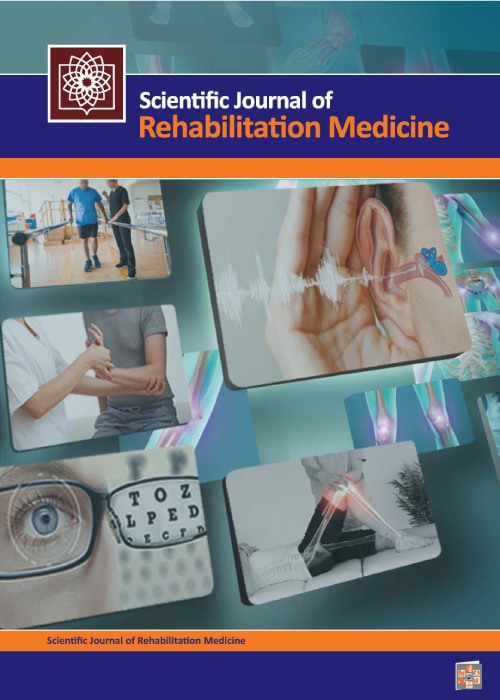Comparison between Elbow Joint Proprioception in Female Athletes and Non-Athletes Showing General Hypermobility Syndrome and Healthy Female Athletes
Author(s):
Article Type:
Research/Original Article (دارای رتبه معتبر)
Abstract:
Background And Aim
Hypermobility is generally referred to as a distinguished risk factor in developing joint instability and the possibility of causing damage. Thus, it is widely believed that proprioception goes impaired in individuals with hypermobility. Therefore, the present study was carried out to compare elbow joint proprioception in female athletes and non-athletes showing hypermobility syndrome and healthy female athletes.Materials And Methods
The study followed a case-control methodology and the sampling was choice-based and based on the availability of the participants. A total of 30 female participants were categorized into three distinct groups, each comprising of 10 healthy athletes, 10 athletes showing hypermobility, and 10 non-athletes with hypermobility. Participants age range was between 20-30. Elbow flexion position sense error was measured through isokinetic dynamometer biodex system 3 through active method in 45 and 60 degrees and the values obtained were compared among the three groups and different angles. For data analysis, variance analysis test with repeated measures was used. The significance level was set at pResults
Data analysis indicated that the athletes showing hypermobility syndrome and healthy athletes both showed a higher proprioceptive precision compared with non-athletes demonstrating hypermobility. Additionally, the athletes with hypermobility and healthy athlete groups demonstrated more accurate proprioceptive acuity at an angle of 60 degrees compared with that of 45 degrees. But, the non-athletes showing hypermobility demonstrated a less accurate proprioceptive acuity at an angle of 60 degrees compared with that of 45 degrees.Conclusion
Unlike the previous investigations, the current study rejected the notion of existing impaired proprioception within the individuals showing hypermobility. So far, the hypermobility athletes proprioception has not been evaluated, which can be a good reason to justify this claim, since we may direct attentions to the key role of physical exercises in joints proprioception. Therefore, it seems that we could rely on hypermobility athletes to be used in higher levels of competition and in sport talent scouting.Keywords:
Language:
Persian
Published:
Scientific Journal of Rehabilitation Medicine, Volume:6 Issue: 3, 2017
Pages:
21 to 28
magiran.com/p1768600
دانلود و مطالعه متن این مقاله با یکی از روشهای زیر امکان پذیر است:
اشتراک شخصی
با عضویت و پرداخت آنلاین حق اشتراک یکساله به مبلغ 1,390,000ريال میتوانید 70 عنوان مطلب دانلود کنید!
اشتراک سازمانی
به کتابخانه دانشگاه یا محل کار خود پیشنهاد کنید تا اشتراک سازمانی این پایگاه را برای دسترسی نامحدود همه کاربران به متن مطالب تهیه نمایند!
توجه!
- حق عضویت دریافتی صرف حمایت از نشریات عضو و نگهداری، تکمیل و توسعه مگیران میشود.
- پرداخت حق اشتراک و دانلود مقالات اجازه بازنشر آن در سایر رسانههای چاپی و دیجیتال را به کاربر نمیدهد.
In order to view content subscription is required
Personal subscription
Subscribe magiran.com for 70 € euros via PayPal and download 70 articles during a year.
Organization subscription
Please contact us to subscribe your university or library for unlimited access!


